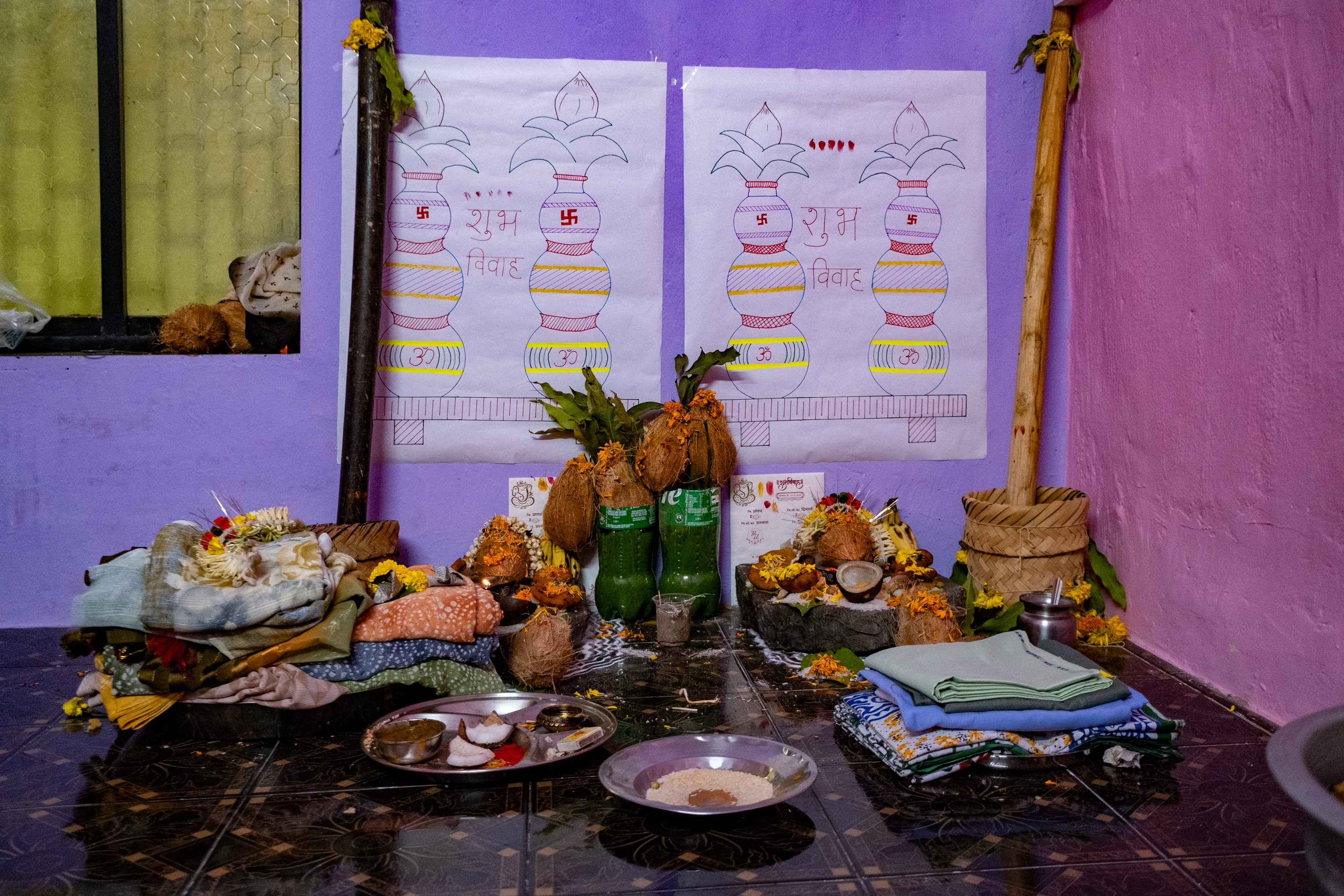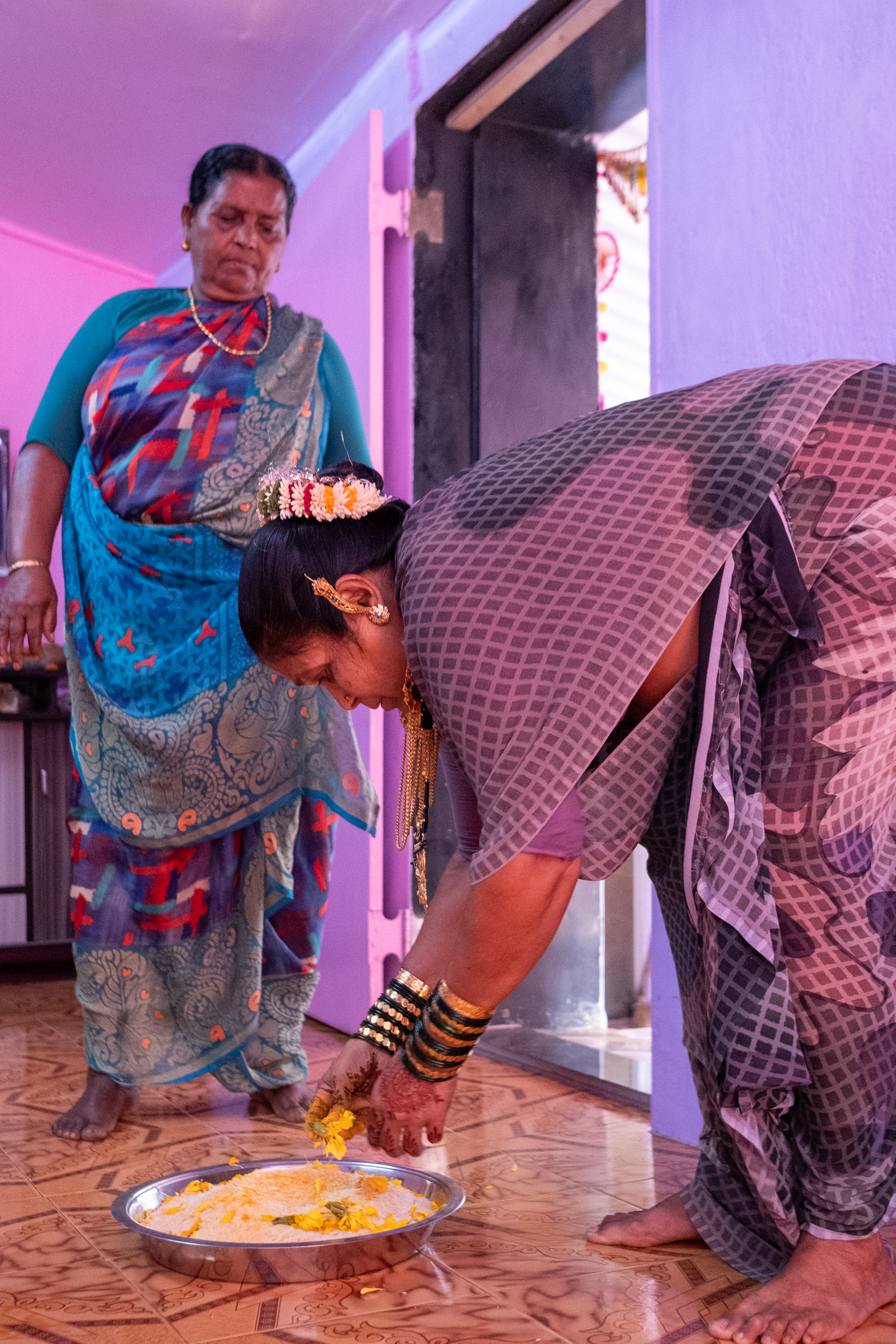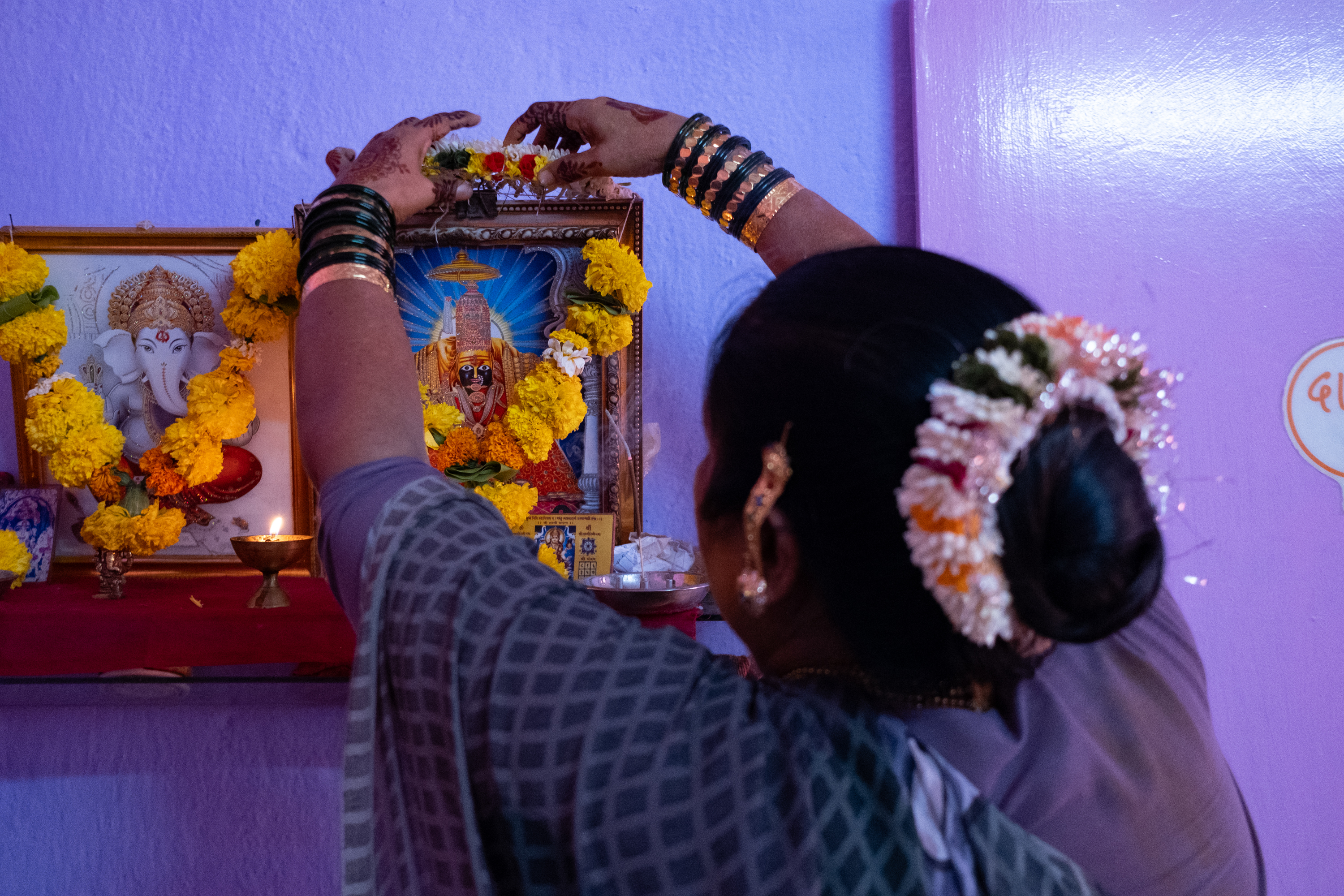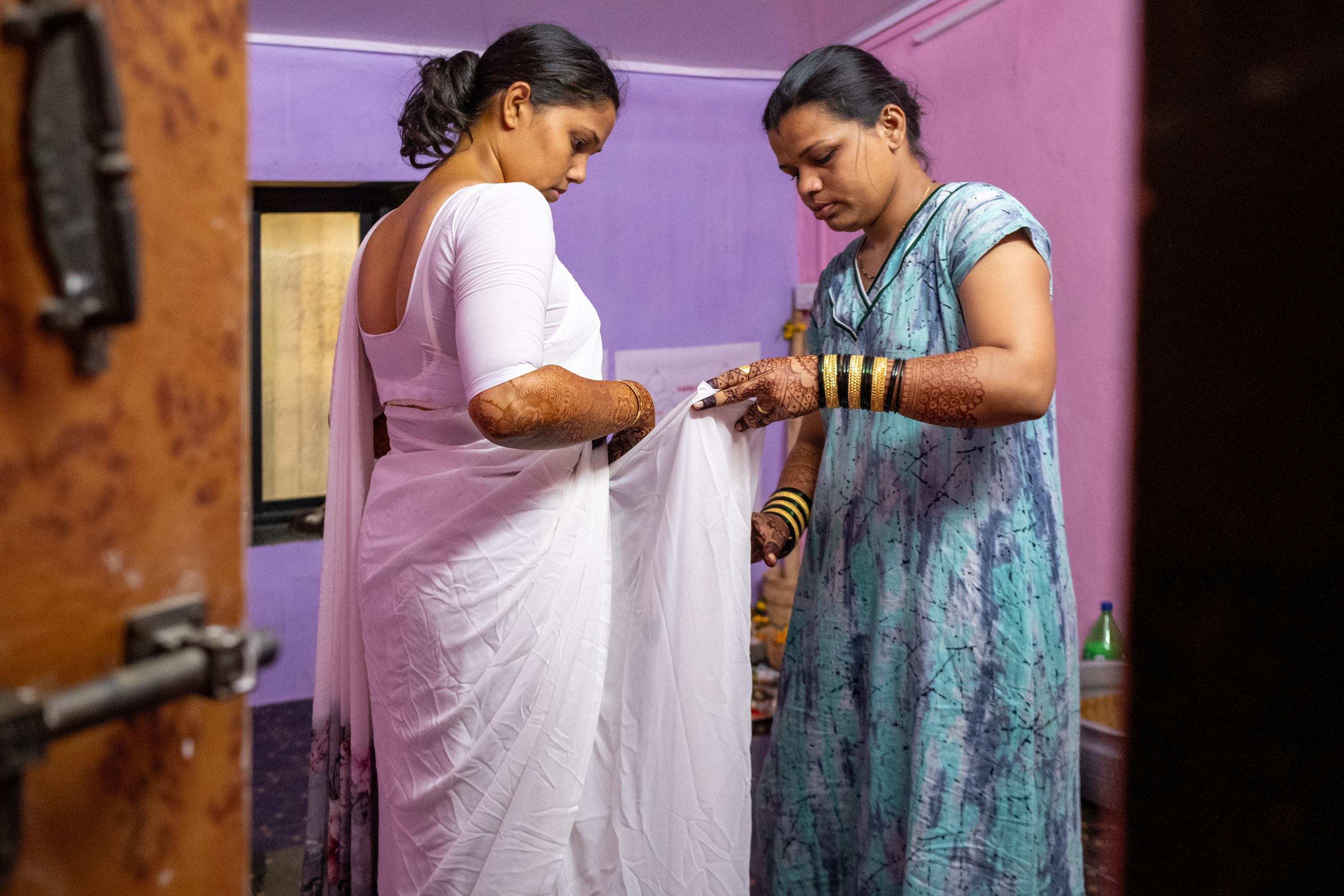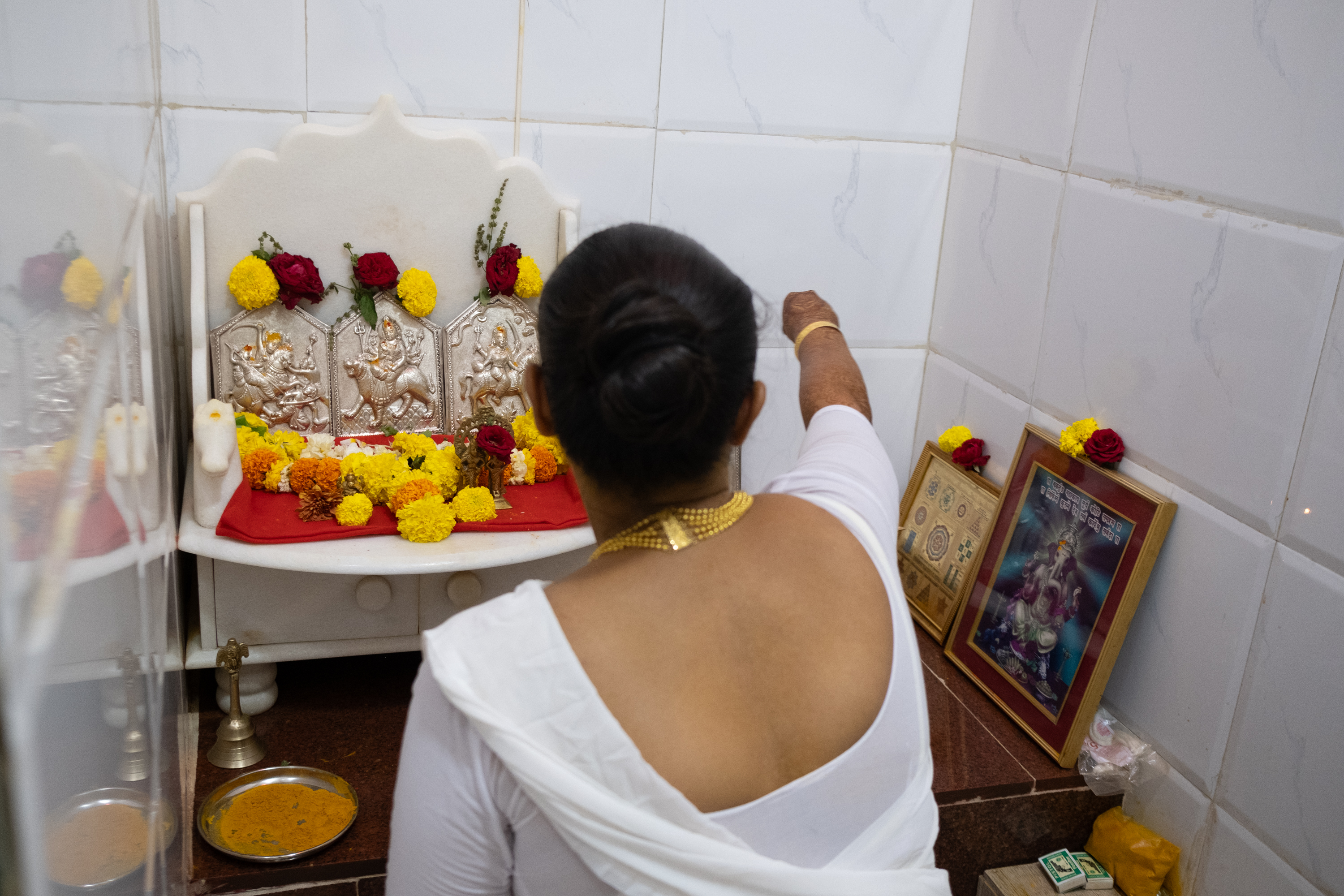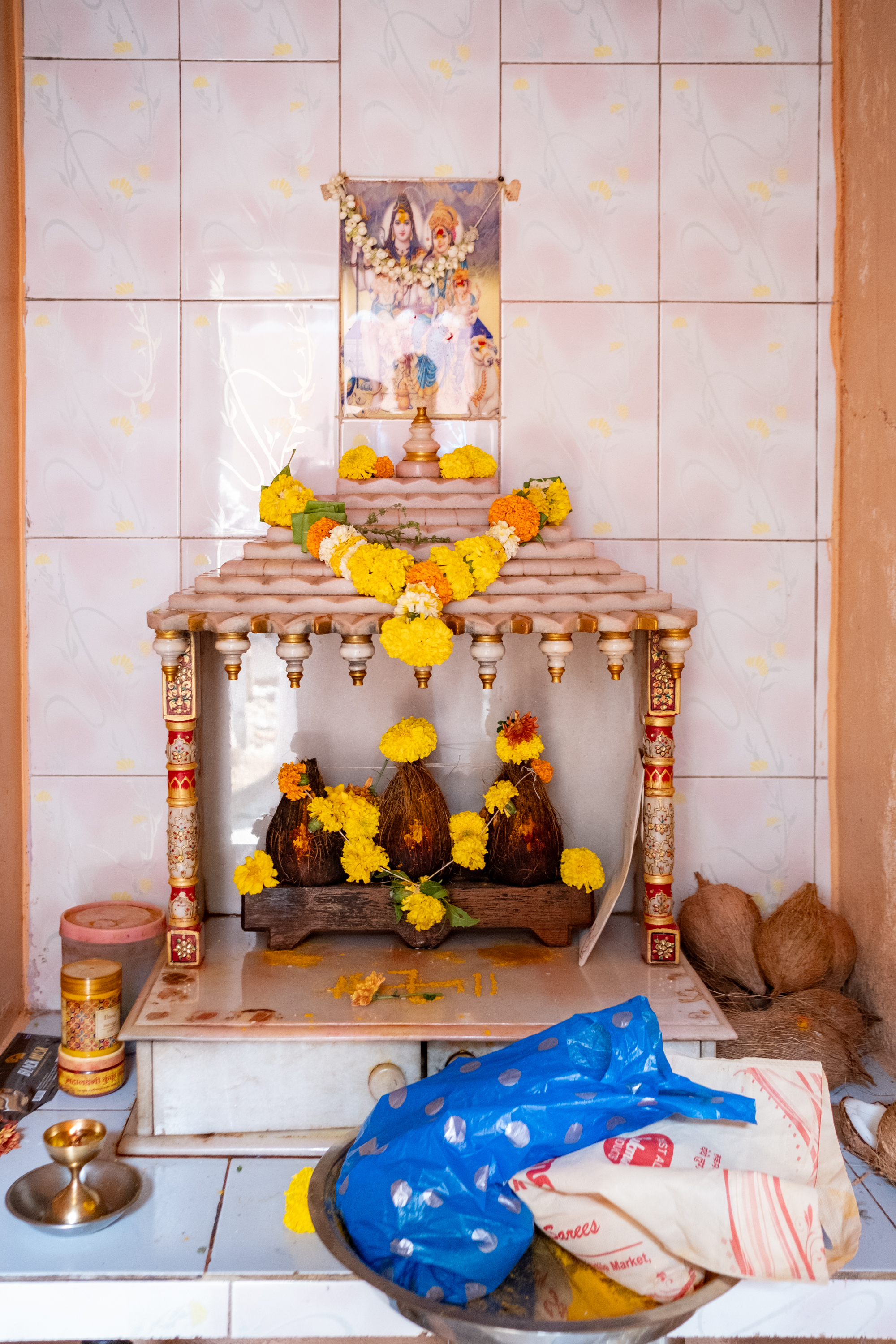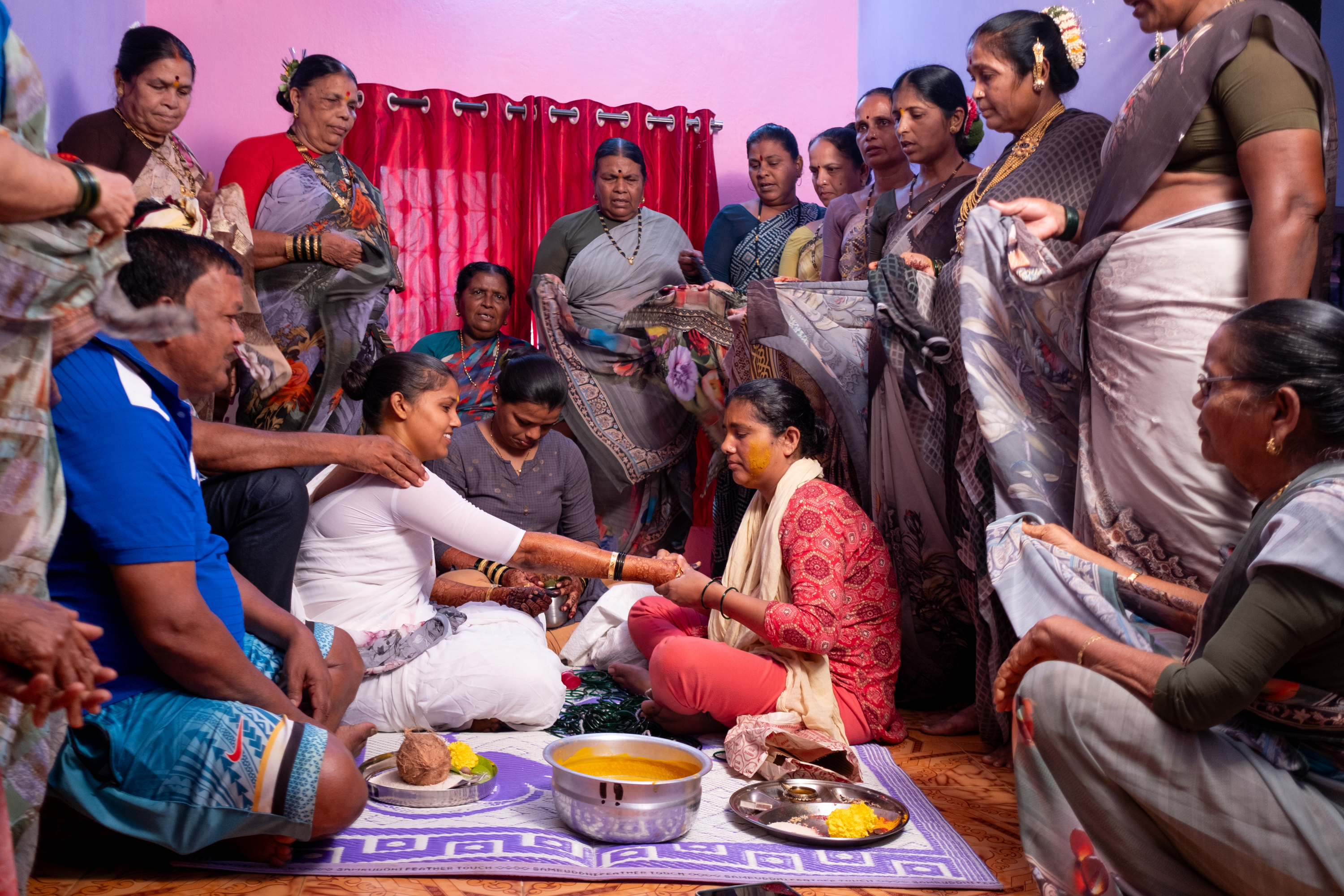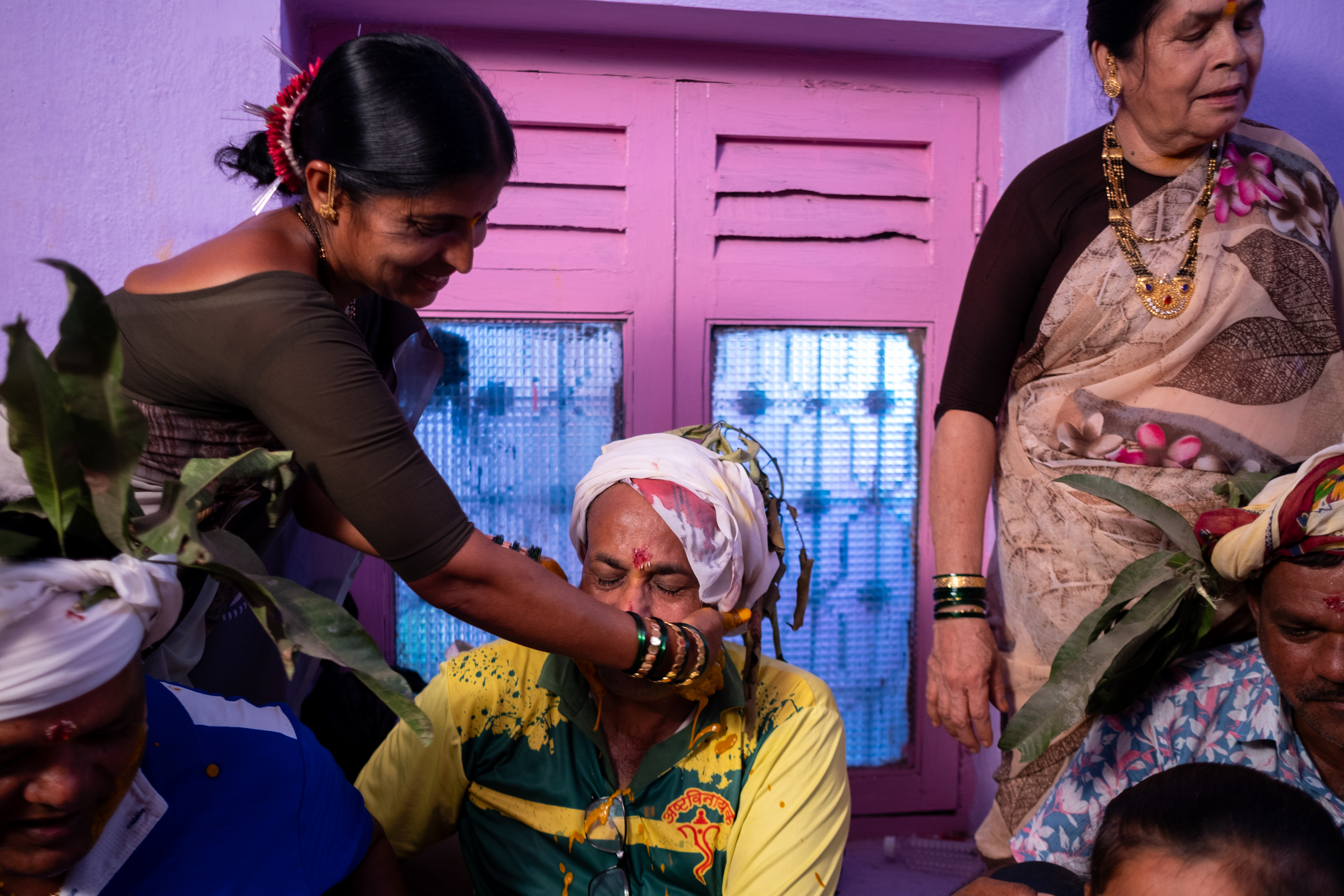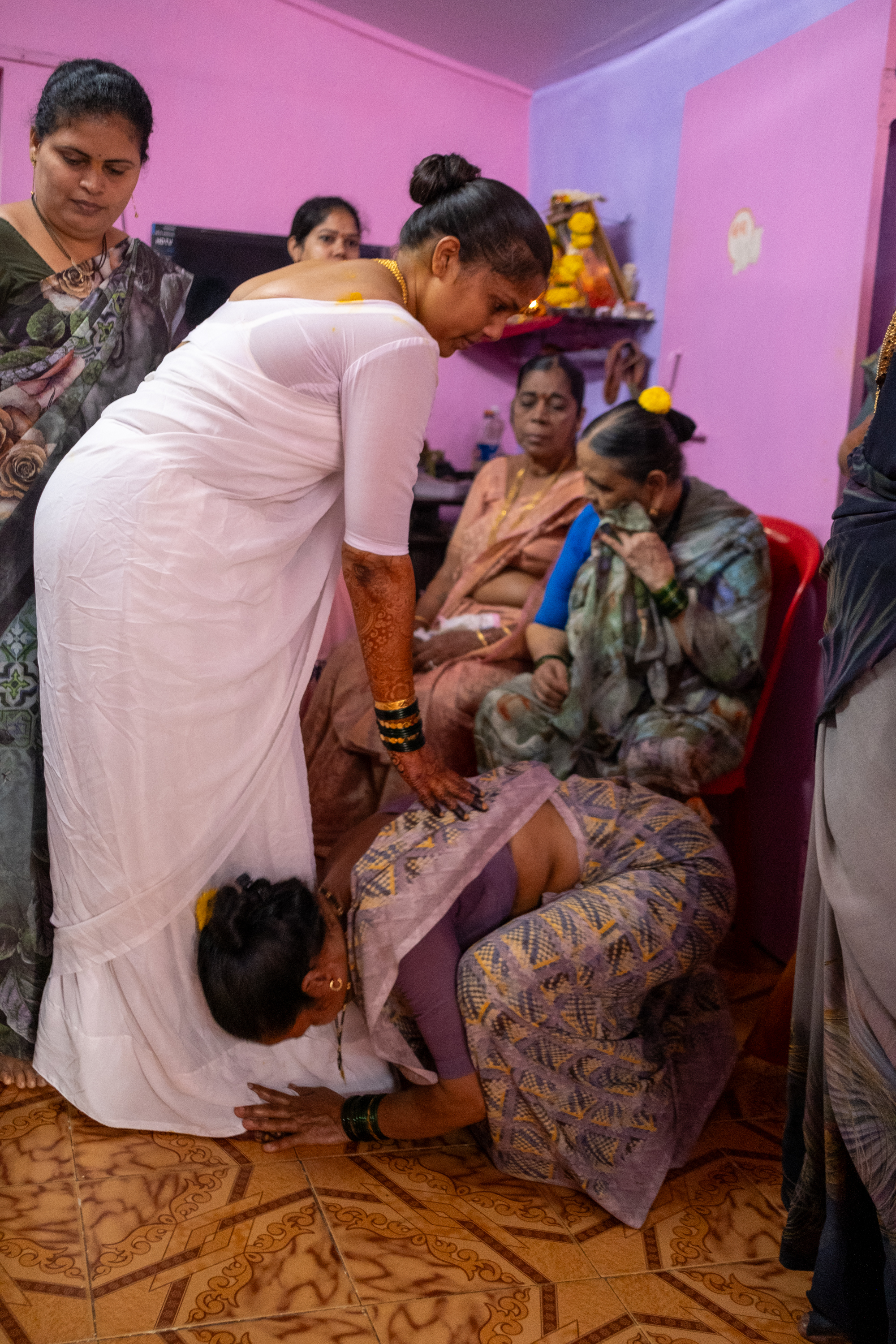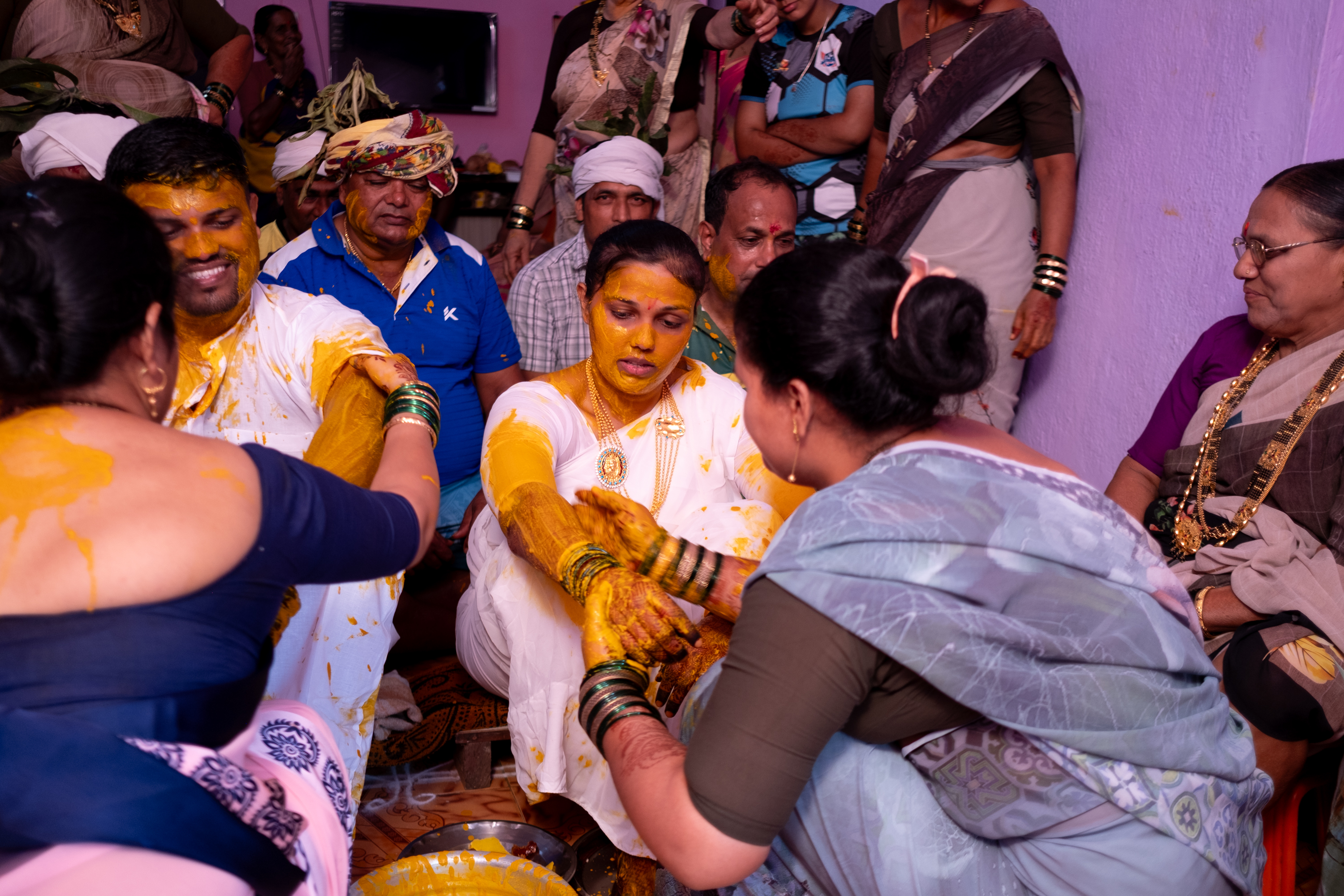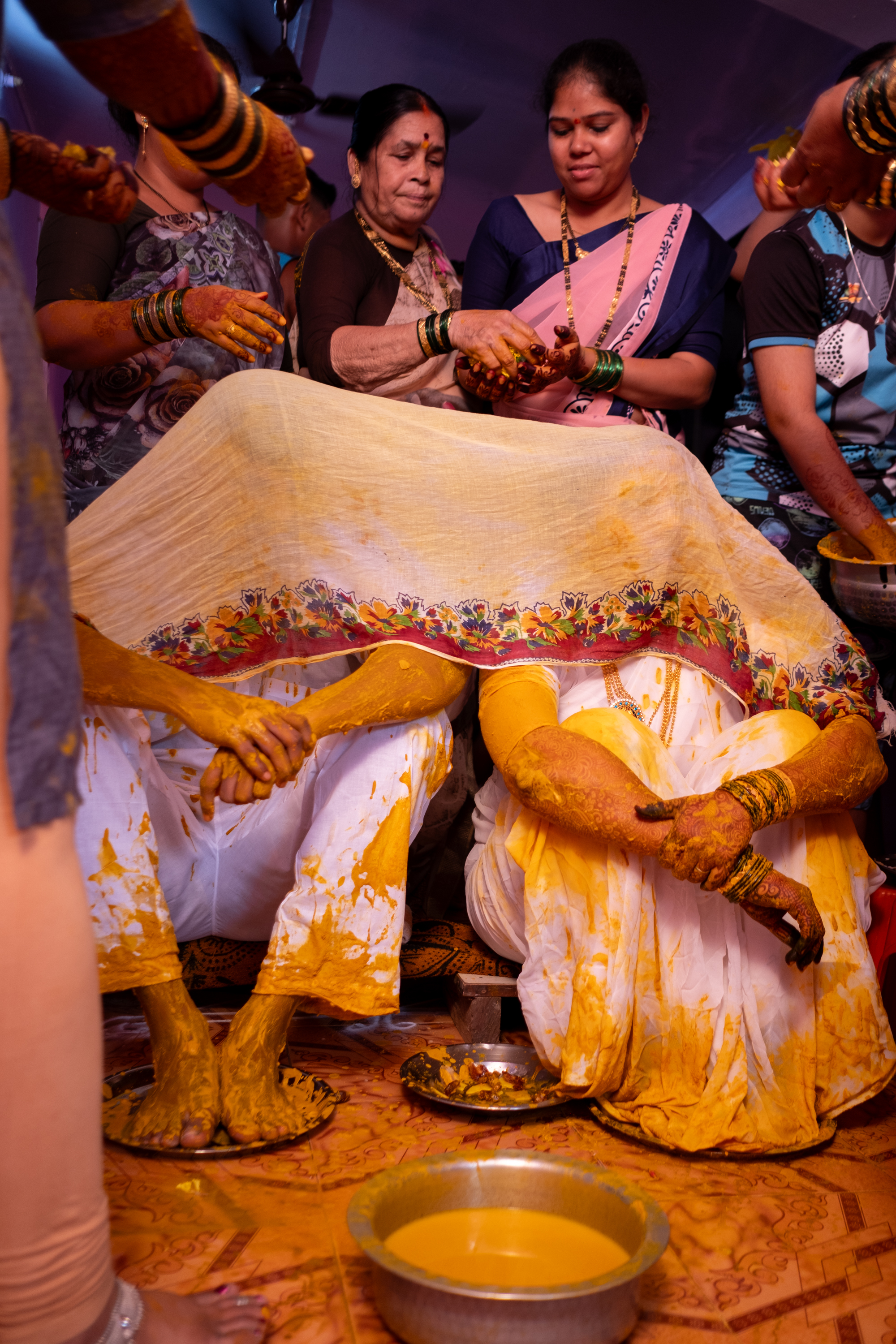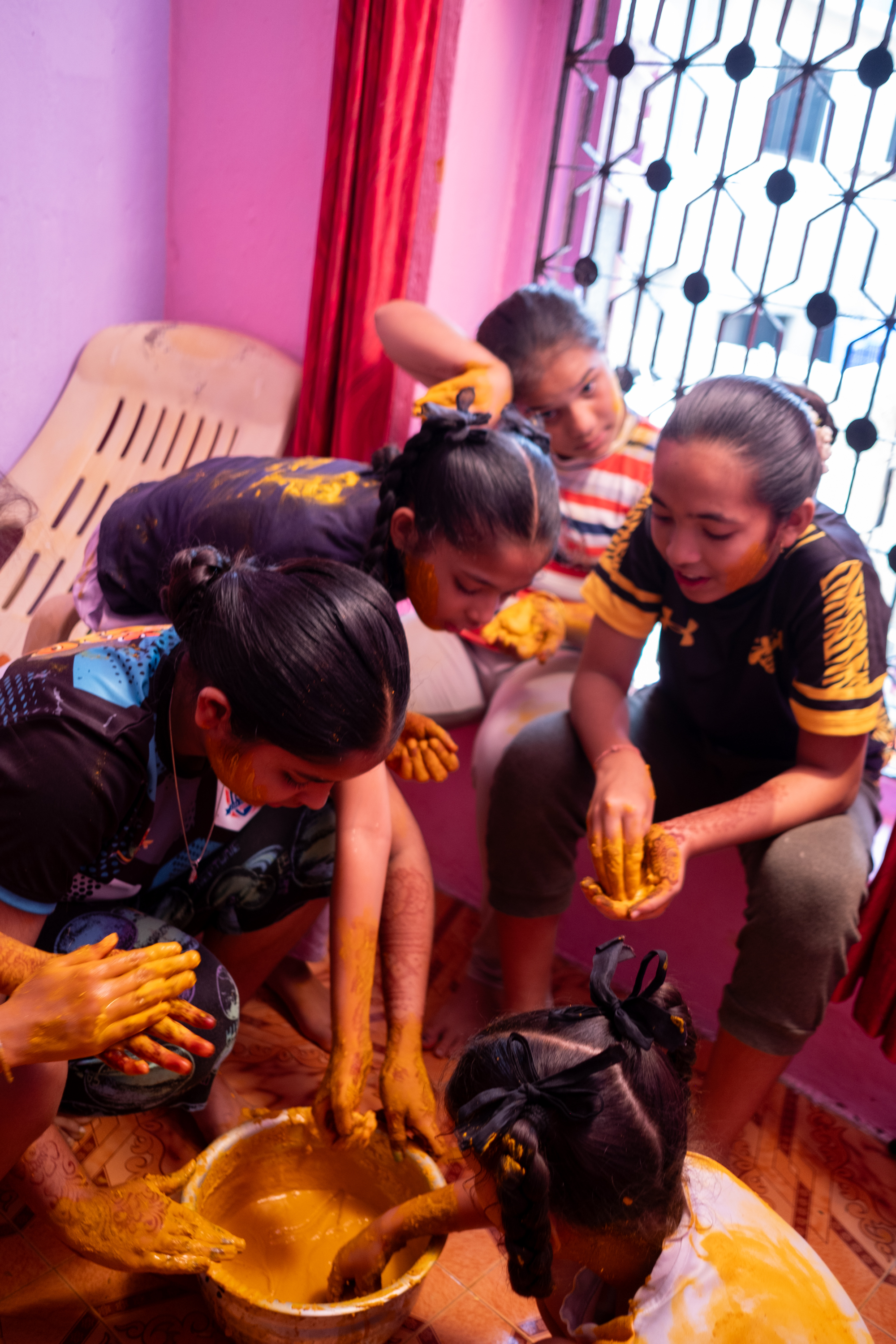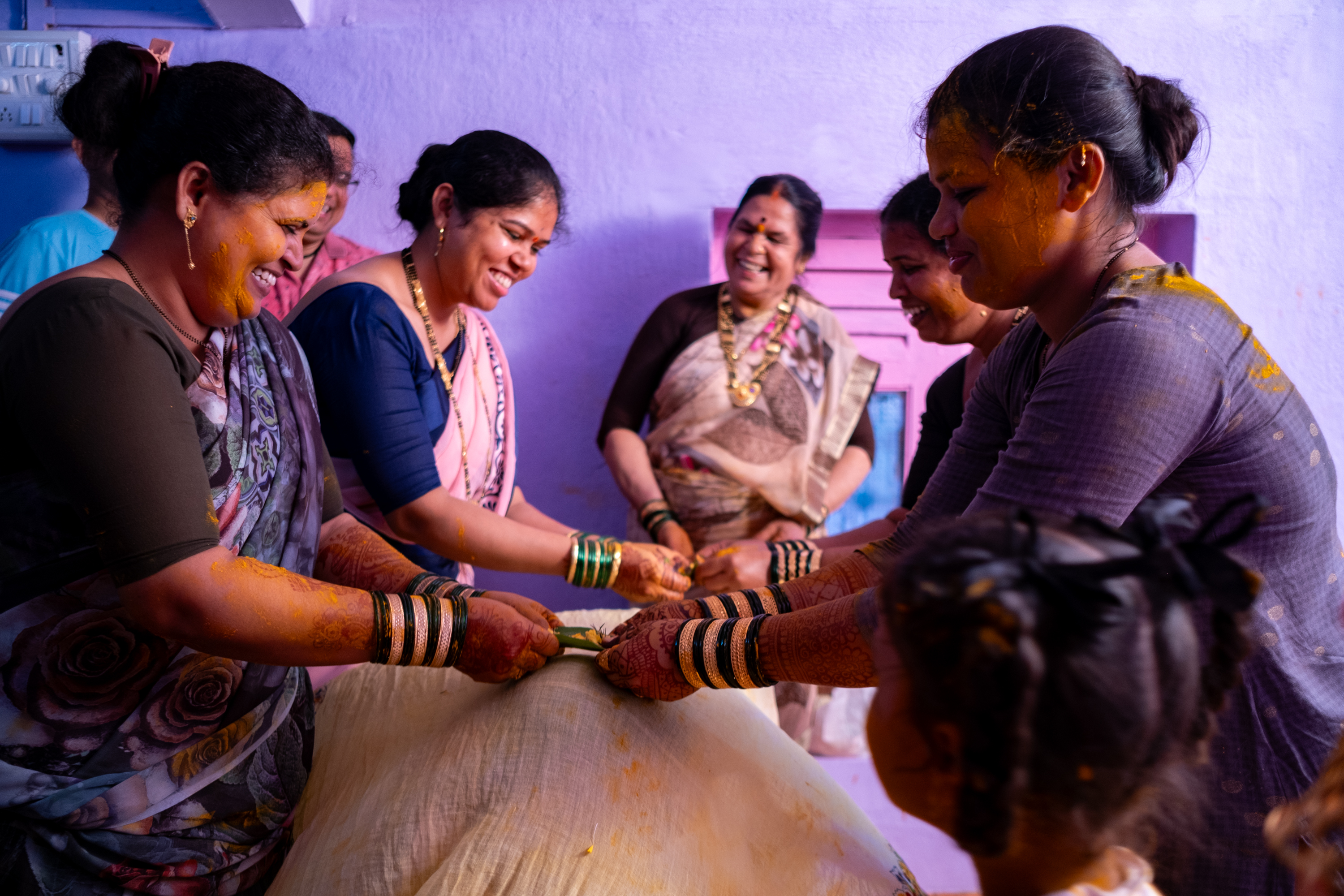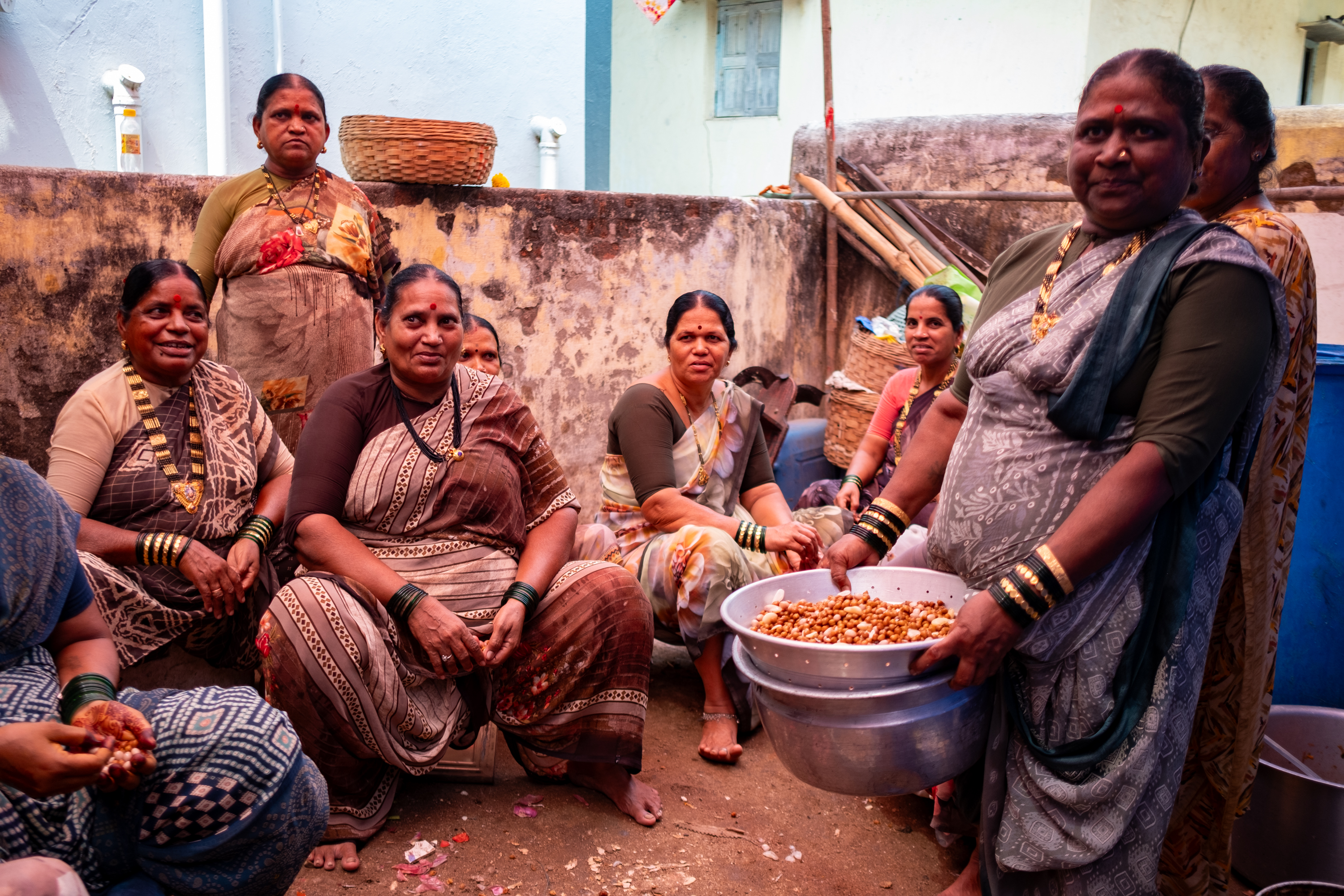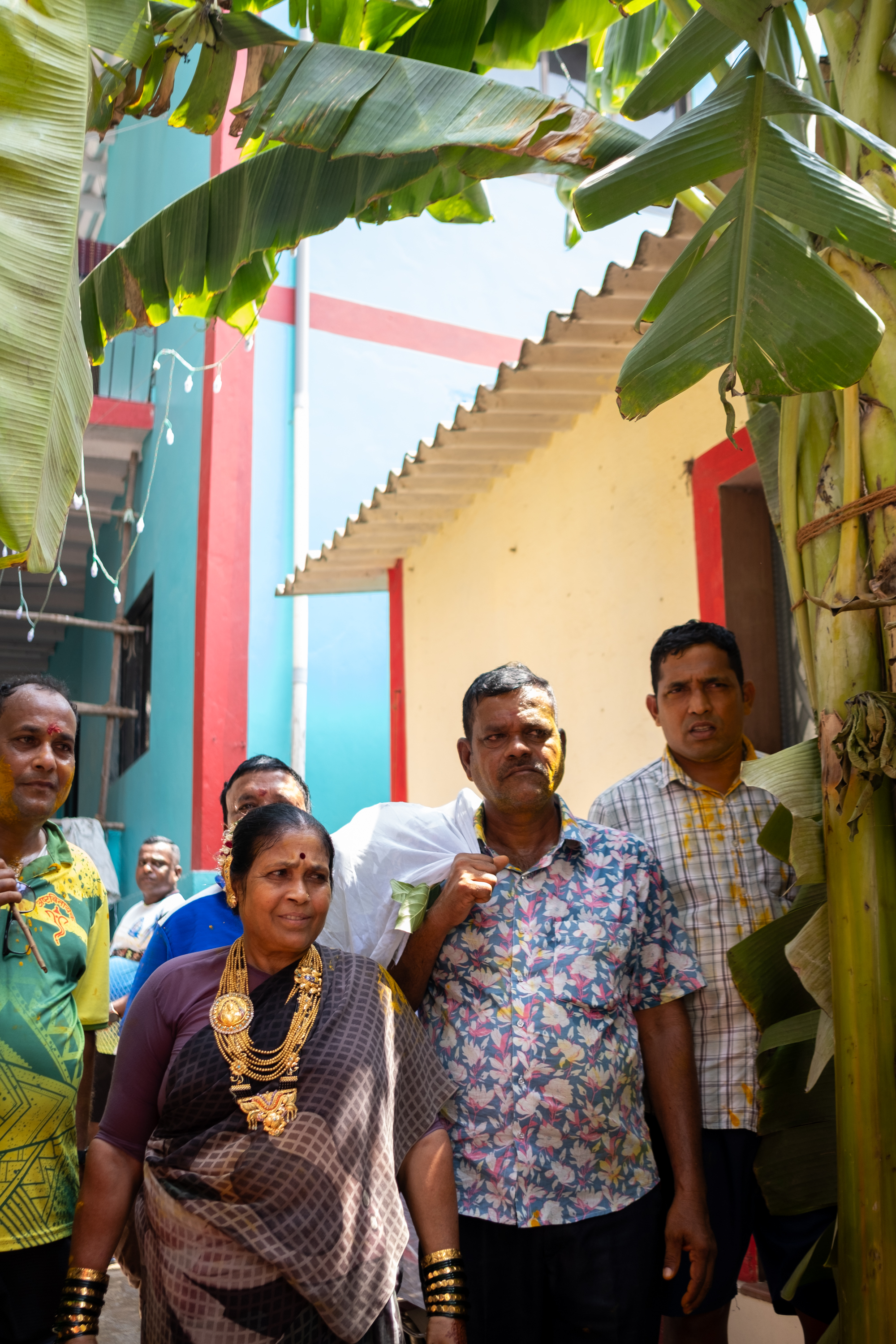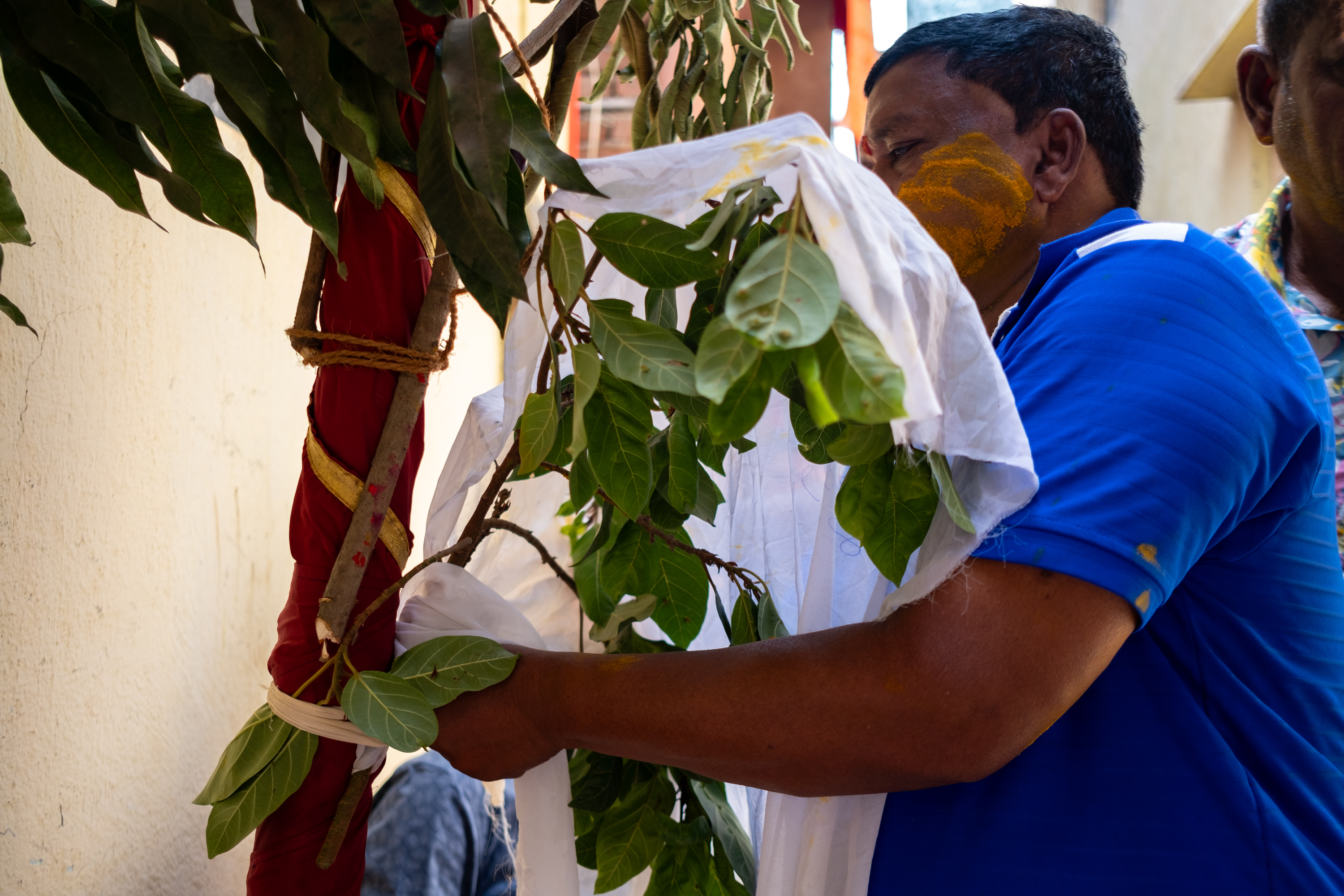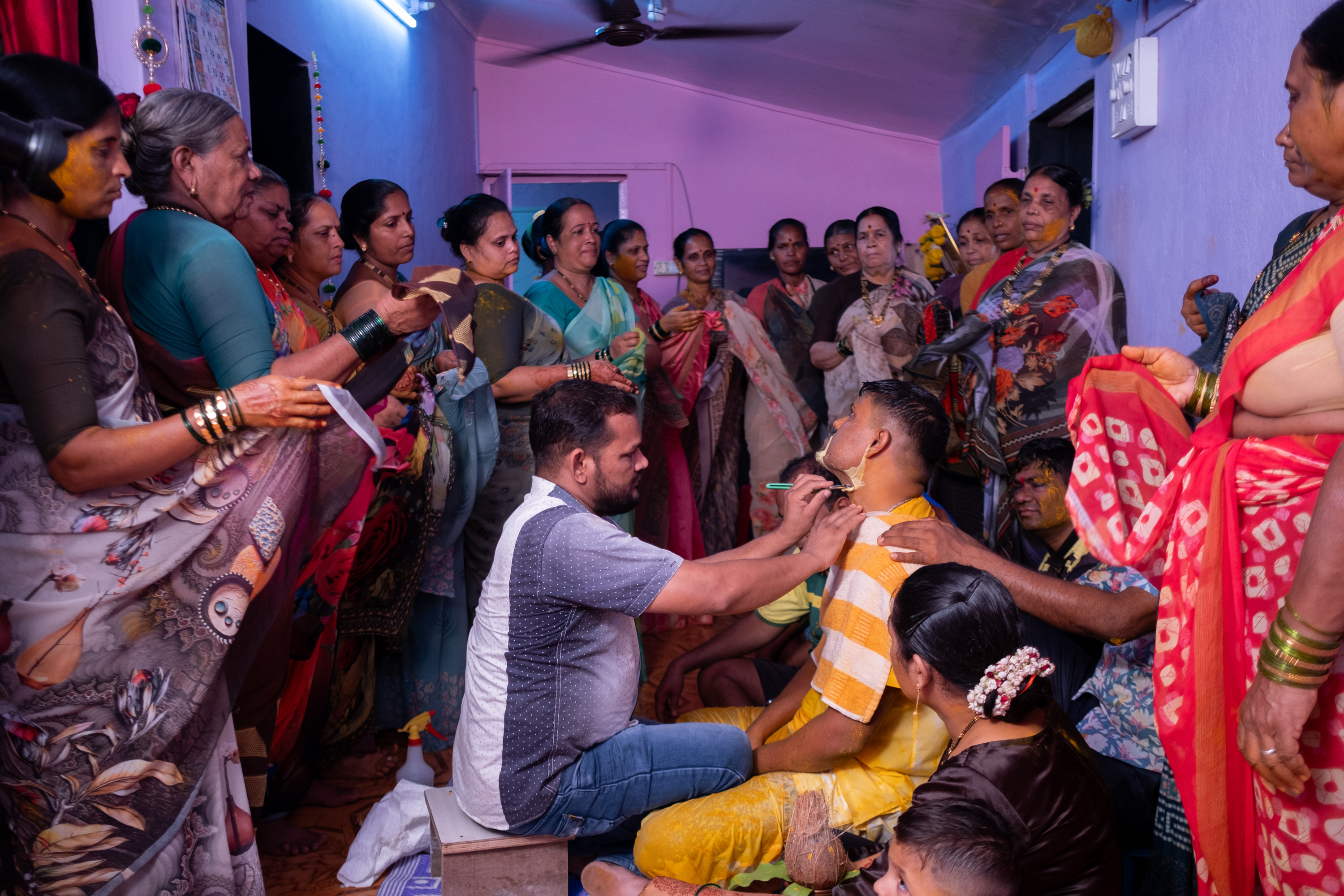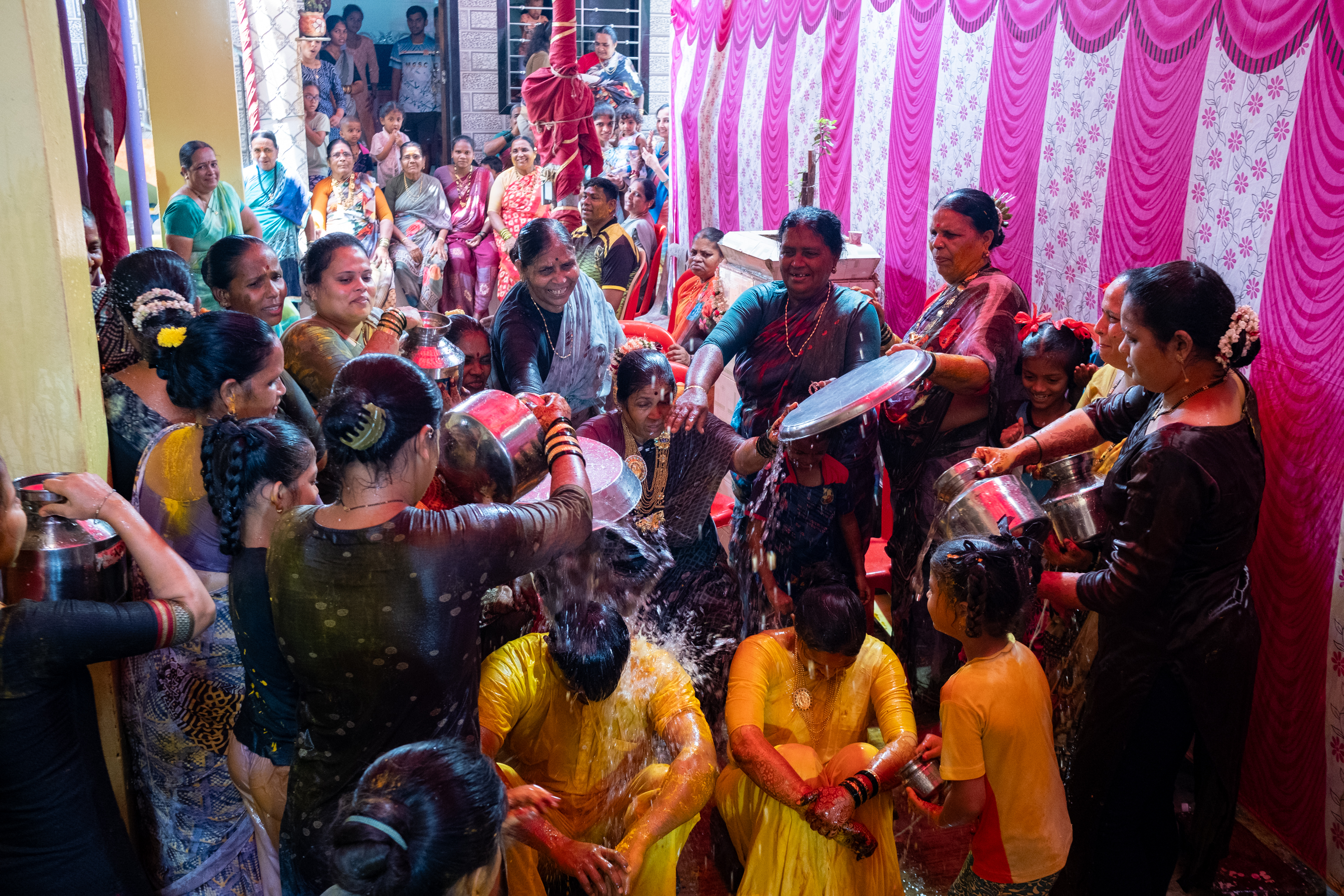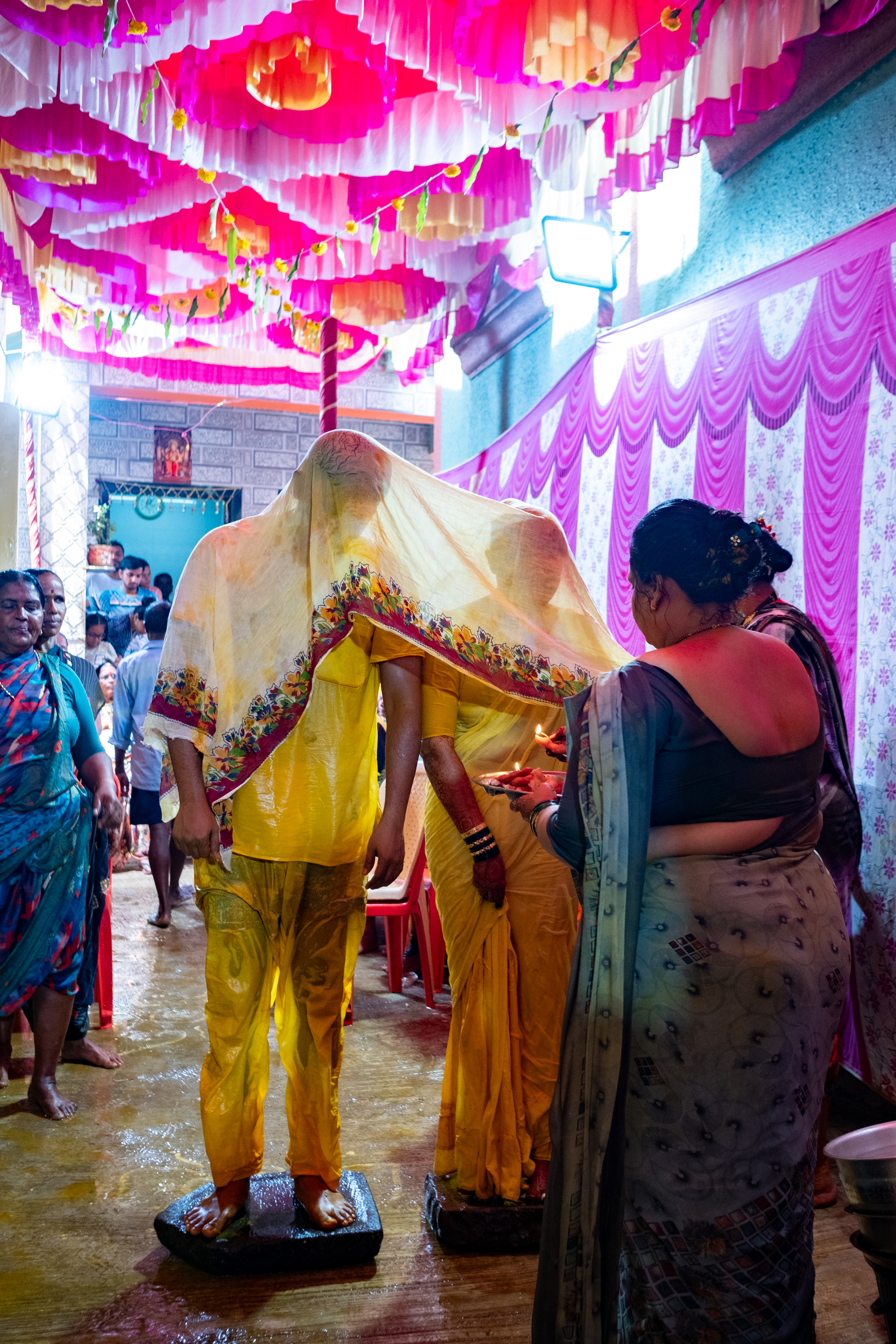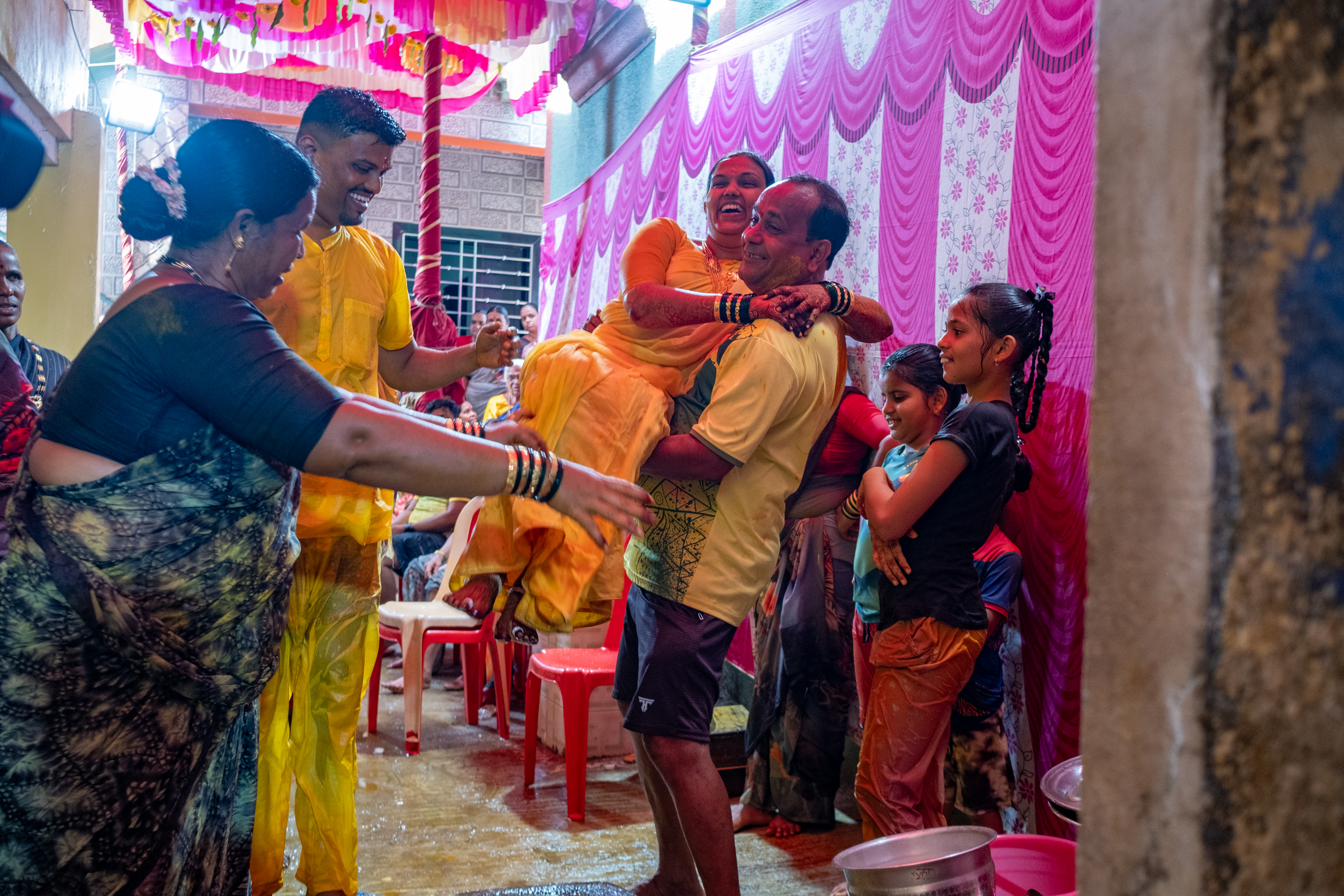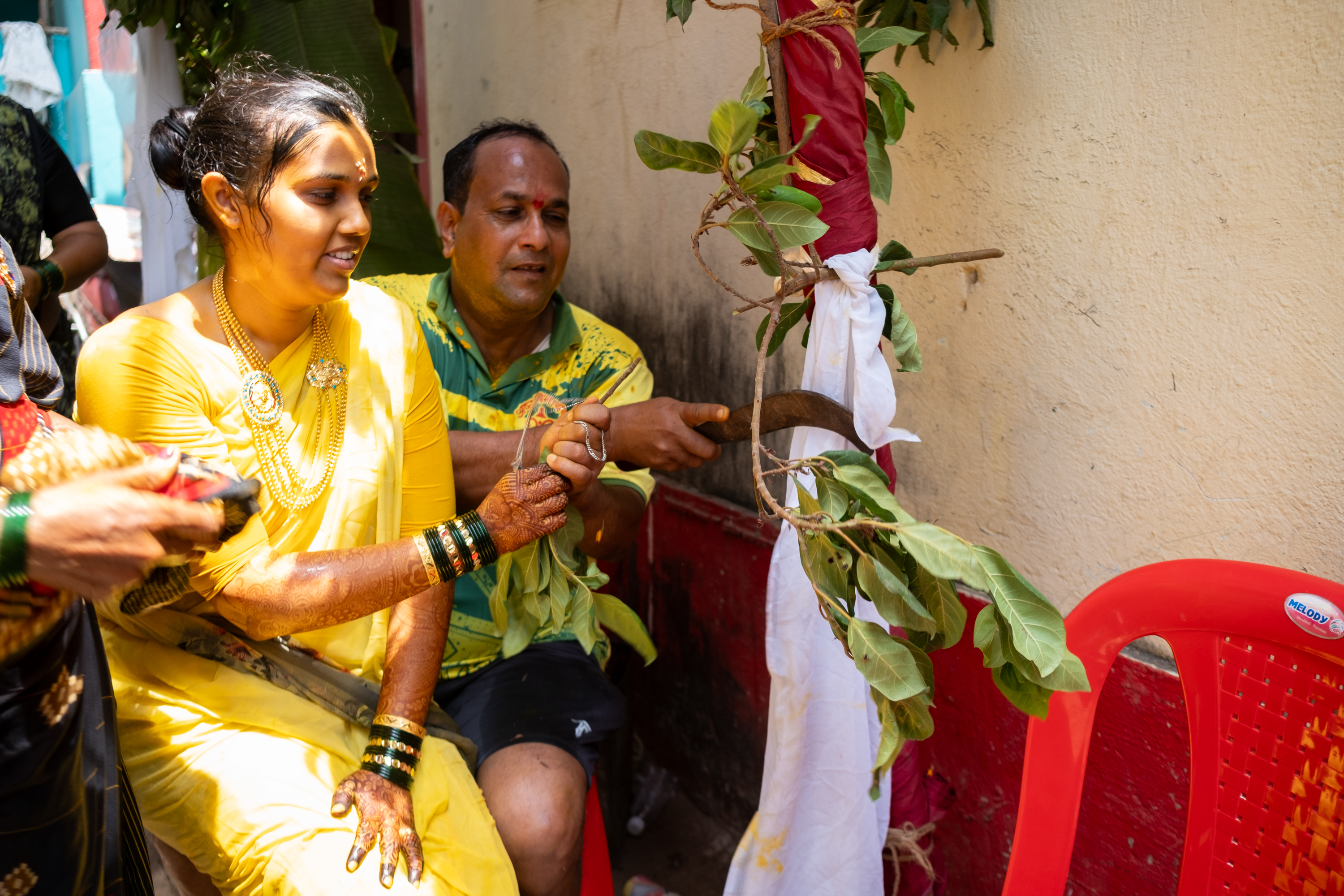From Sakharpuda to Grihapravesh: Rituals and Customs of Koli Weddings
Koli weddings, akin to other Indian weddings, are steeped in customs and traditions that reflect the community’s deep-rooted culture and values. These rituals not only celebrate the union of two individuals but also strengthen familial and community bonds. The mama (maternal uncle), whose presence and participation are integral throughout the wedding, plays a pivotal role in the unique customs and traditions of Koli weddings. The mama also oversees the reception and hospitality arrangements, ensuring the guests’ comfort and the smooth flow of the wedding ceremonies.
Pre-wedding rituals commence about a week before the wedding, followed by the main events on the wedding day, and finally, the post-wedding rituals that mark the beginning of marital life. Certain preparations start in advance, such as assembling the bridal trousseau, hiring a priest to oversee and conduct rituals, arranging catering and band services, and decorating the wedding venue.
A family priest performs Lagnaach bedior, or matchmaking, by matching the horoscopes (janampatrikas) of both the bride and groom. Based on the priest’s advice, the families finalise an auspicious time and date (muhurta) for the wedding.
A ceremony known as sakharpuda (sakhar meaning sugar, puda meaning a packet or box) formally consecrates the alliance between the two families. During this ceremony, the prospective groom’s parents present a packet of sugar to the prospective bride and bride’s parents, who reciprocate with a coconut and a coin, symbolising mutual committment. As a gesture of acceptance into the family, the groom’s parents gift a sari to the bride to wear on the wedding day. Following sakharpuda, the families send out the wedding invitations.
Kelvan, another pre-wedding ritual, follows sakharpuda, in which both families invite the bride and groom to a meal at their respective homes. This ritual also includes offering prayers to their kuladevata (ancestral tutelary deity) to seek blessings.
A day before or on the morning of the wedding, relatives perform the haldi chadavane, or haldi (turmeric) ceremony. Relatives apply haldi (turmeric paste) to the groom’s forehead, shoulders, hands, and feet, using mango leaves. The bride then receives the paste and performs the same ritual. Both families can also conduct joint haldi ceremonies. During the ceremony, the maternal uncle blesses the couple and participates in the rituals. The bride receives green bangles after the haldi ritual, and mehendi (henna) adorns her hands and feet.
The wedding day begins with a prayer to Lord Ganesha, revered as the remover of obstacles, and an invitation from the grihadevata (home deity) to the wedding mandap. The bride may perform a Gauri Puja to seek blessings from Goddess Parvati for a good marital life. The groom's family gifts the bride a saree, and the bride's parents present the groom with attire. Koli brides typically wear a six-yard Paithani saree or a nine-yard Navari saree, while grooms don a dhoti and kurta, with a pheta (turban) or a white Gandhi-topi (cap) on the head.
As the groom makes his way to the wedding venue, typically held at the bride’s home, he may ride a horse or walk to the venue, accompanied by friends and family dancing and singing along the way. Bands play loud music and light fireworks as the wedding procession moves forward. The bride's mother welcomes the groom and his family upon their arrival at the venue, performing aarti (the ritual of waving a sacred flame before a deity during prayers) and placing a tilak (mark) on the groom's forehead to bless and welcome him into the family.
Dressed in her wedding finery, the bride then enters the mandap. The priest hangs an antarpat (silk cloth) between the bride and groom as they stand facing each other. The priest performs the mangalashtakas, a series of ashtaka (eight) mangala (auspicious) mantras recited to bless the couple. The priest removes the antarpat at an auspicious moment, and the couple exchanges varmala (floral garlands), symbolizing the start of their journey together.
Agni, the God of fire, serves as the ultimate witness to the marriage during the next set of rituals, known as agnisakshi. The bride's father performs the kanyadaan, in which he gives his daughter's hand to the groom, symbolizing the transfer of responsibility. The bride and groom chant three mantras and offer puffed rice to the sacred fire in a ritual known as lajahoma. The bride silently utters the fourth mantra. The couple then performs the saptapadi, taking seven steps around the sacred fire, each step symbolizing a vow of mutual support and understanding. The groom ties the mangalsutra (auspicious thread) around the bride’s neck and applies kunku (red vermillion) to her forehead, symbolising her status as a married woman. During various stages of the ceremony, family members shower akshata (whole rice or flowers) on the bride and groom, offering their blessings for a happy and prosperous married life.
In the closing rites, the couple performs Laxmi Puja and receives blessings from everyone in attendance. The bride says her farewell to her family as she departs from her paternal home, often a poignant moment. The groom's mother welcomes the newlyweds upon their arrival at the groom's home, performing aarti and ceremoniously washing their feet with milk and water. As the bride enters her new home, she overturns a kalash (pot) of rice grains with her right foot and steps on a plate of kumkum (red vermillion). This ritual, known as grihapravesh, signifies the bride’s arrival as an embodiment of Sri Lakshmi, symbolising the prosperity and fortune she brings to the household.
Koli weddings encapsulate the cultural, social, and familial values of the Koli community, celebrated with joy through festivities, dancing, singing, and feasting. The active involvement of extended family members, particularly the maternal uncle, underscores the significance of familial bonds in Koli weddings, highlighting the collective responsibility and support system within the community. Furthermore, these weddings play a crucial role in passing down traditions and customs to the younger generation, ensuring the preservation and continuation of the community’s rich heritage in the future.
A family priest entrusts the task of Lagnaach bedior (matchmaking), which involves matching the janampatrikas (horoscopes) of the bride and groom. The families set the muhurta (auspicious time and date) for the wedding on the advice of the priest.
On the day before the wedding, a special ceremony is conducted to prepare a mixture of wheat and urad dal (split black gram lentil). The shrine of the grihadevata (household deity) ritually offers this mixture. Afterwards, the bride and groom receive blessings from the wedding guests who attend the ceremony.
The women in the household grind a mixture of wheat and urad dal (split black gram lentil) to make flour. Koli weddings serve medu vada, a traditional breakfast dish, by shaping this flour into doughnut-like rings and deep-frying it.
The house's women perform puja ceremonies dedicated to the grihadevata (tutelary deity) Garli Devi and Karjai Devi. Garli Devi, or Garli Mata, is considered a protector of fishermen and their families, ensuring their safety and prosperity. Fishermen revere Karjai Devi, or Karjai Mata, as their guardian, ensuring their safety at sea and protection from natural calamities and dangers.
Both the bride and the groom host the haldi (turmeric) ceremony at their homes. The bride and the groom wear white attire that becomes dyed yellow during the ceremony. Typically, this event takes place either on the morning of the wedding day or the day before.
Kelvan, another pre-wedding ritual, follows Sakharpuda, where both families invite the bride and groom for a meal at their respective homes. This occasion also includes offering puja to their kuladevata (ancestral tutelary deity) to seek blessings.
The Koli household worships coconuts in a shrine before initiating auspicious ceremonies. The Koli community places significant cultural and religious importance on the coconut, using it on all auspicious occasions. Its three eyes symbolise the Trimurti—the Hindu trinity of Brahma (the creator), Vishnu (the preserver), and Shiva (the destroyer).
Before the haldi (turmeric) ceremony, there is a ritual where the bride is adorned with glass bangles, symbolising her transition from girlhood to womanhood.
On the wedding day, the bride must wear green glass bangles. In Maharashtrian culture, green symbolises life, creation, and fertility.
The family's mama (maternal uncle) plays a crucial role in wedding rituals. Both the bride and the groom entrust their well-being to him. He may actively participate in various wedding rituals and ceremonies, offering assistance and guidance to ensure smooth proceedings and adherence.
Before the haldi (turmeric) ceremony, members of the family, clan, and community seek blessings from the bride and the groom by touching their feet. Similarly, the bride and groom also seek blessings from elders in the family, clan, and community by touching their feet.
Rangoli patterns, drawn on the floor using white chalk powder or rice flour, decorate the venue for the haldi (turmeric) ceremony.
During the haldi (turmeric) ceremony, the mami (wife of a maternal uncle) and other close relatives assist the bride and groom in performing pheras or saptapadi (the ritual of circumambulation around a sacred object). They carry a kalash (pot) filled with coconut and mango leaves in their hands.
The bride and groom receive an application of a paste containing turmeric, sandalwood, and other ingredients during the haldi (turmeric) ceremony. The bride and groom apply this paste either by hand or using mango leaves, typically starting from the feet and moving upwards to the arms and face.
Turmeric is considered auspicious in Hindu culture because it is believed to have purifying properties. Applying turmeric paste to the bride's skin is believed to cleanse her body of impurities, preparing her for the sacred union of marriage.
Every member of the family, including children, participates in the ceremony. They take turns applying turmeric and offering blessings to the couple for a successful married life, along with singing traditional songs.
During the haldi (turmeric) ceremony, elders bless the bride and groom with betel leaves, which are considered auspicious and often used in religious ceremonies. Betel leaves symbolise prosperity, good luck, and divine blessings.
The haldi (turmeric) ceremony serves as an occasion for family members and close relatives from both sides to come together and strengthen their bond.
The women gather in the backyard to prepare food for all the guests, fostering a sense of unity and camaraderie among the community as they prepare to welcome the new members into their fold.
In Hindu weddings, it is customary to decorate the entrance of the marriage hall and the houses of the bridegroom and bride with two banana trees. According to tradition, the banana tree symbolizes that the couple's married life will be evergreen, indicating enduring relationships and love between them.
The bride's mama (maternal uncle) brings a mango tree cut down and ties it to the entrance. Mango leaves are regarded as symbols of purity, fertility, and abundance. The mango tree is believed to bring blessings for a fruitful and prosperous married life for newlyweds.
Surrounded by female family members, the groom undergoes a shaving ceremony. Beyond its grooming purpose, this ritual harkens back to a time when marriages involved much younger couples. In earlier days, marriages often occurred at the onset of puberty, and a boy’s first shave marked his transition from boyhood to manhood.
The chakki (grinding stone) is used in various ceremonies to represent strength, stability, and the enduring nature of marriage. During the wedding ceremonies, the bride and groom may place their feet or stand on the grinding stone, symbolising their firm commitment to the vows they are making.
After the haldi (turmeric) ceremony is over, the bride and groom are washed with water. Earlier in the day, women in the family collect water from a well in several pots. Before being used for this purpose, the water is consecrated through prayers and rituals.
The bride and the groom are covered in a veil while relatives perform aarti (the waving of a flame, usually from a lit lamp, before a deity during prayers), blessing the couple and welcoming the bride into the family.
Following the conclusion of the haldi (turmeric) ceremony, the bride's mama (maternal uncle) carries her to the house's threshold.
The bride sits on the lap of her mama (maternal uncle), and together they cut the mango branches with a sickle, signifying the abundance and wealth bestowed upon the bride’s new household.
Before using it for this purpose at the end of the ceremony, A cloth is held above the bride and groom like a canopy, and a pair of winnowing trays are placed on it. Next, the couple must locate various items on the trays without looking up.
